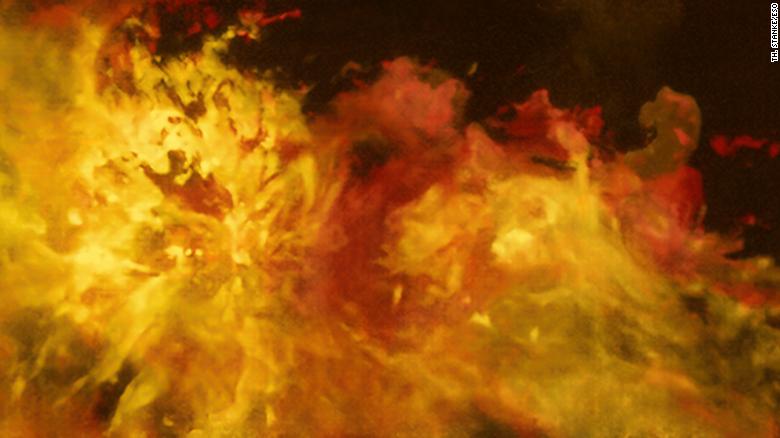(CNN) – The Flame Nebula is one of the many wonders of the Orion constellation, and astronomers have now taken a new perspective on this magnificent celestial feature.
Although the Flame Nebula seems to live up to its name, the fiery image actually refers to how galaxies are captured on radio waves.
This new image shows the flame nebula and its surroundings captured on radio waves by the Atacama Pathfinder Experiment (APEX) in Chile.
This observation was made by the Atacama Pathfinder Experiment (APEX), operated by the European Southern Laboratory (ESO, abbreviated in English) in the Atacama Desert in Chile.
Orion is not just a popular galaxy. This part of the sky is where giant hydrogen clouds form new stars and planets. Molecular clouds are 1,300 to 1,600 light-years away from our planet.
The Flame Nebula has a young star cluster at its center. These stars emit high-energy radiation, which glows gas clouds dramatically.
The new images are the result of observations made a few years ago by former astronomer Thomas Stanke and his team at the Southern European Laboratory. Newly processed images of the nebula, along with other observations, were accepted for publication in the journal. Astronomy & Astrophysics.
This new look at Orion features came after the installation of the Super Game Tool in the Atacama Pathfinder experiment. The instrument is designed to observe molecular clouds found in the Milky Way. For this particular research, the team used it to detect radio waves emitting carbon monoxide in Orion clouds.
“As astronomers say, whenever there is a new telescope or instrument, look at Orion: always find something new and interesting!” Stanke said in a statement.
While observing the Flame Nebula and its surroundings, the researchers also observed clouds reflecting light from nearby stars and discovered a new, smaller circular nebula, which they named the Cow Nebula. The Super Game tool will help astronomers to map these star nurseries where stars are born.
The flame nebula dominates the left half within the yellow rectangle in the image below. On the right is a reflection of the NGC 2023 Nebula and on the top right is the Equestrian Nebula.
Swipe between images to see differences in background, one captured by infrared light through the astronomical and infrared study telescope at the Paranal Laboratory in Chile, the other visible from the Digital Sky Survey 2.
As Orion became more popular, telescopes observed this part of the sky in terms of the number of wavelengths of light.
Despite the fiery nebula’s fiery appearance, the clouds are very cold, reaching only a few tens of degrees below absolute zero. Absolute zero -273.15 C or -459.67 F.


:quality(85)/cloudfront-us-east-1.images.arcpublishing.com/infobae/SMPW7M5BQFERBOQUPJXKCOKARY.jpg)
:quality(85)/cloudfront-us-east-1.images.arcpublishing.com/infobae/NP5NEZXMZFGNLBHNEQJHPJVMKM.jpg)

:quality(85)/cloudfront-us-east-1.images.arcpublishing.com/infobae/X7DZAL3I4REJTKPZ4Y4DYBHFMI.jpg)